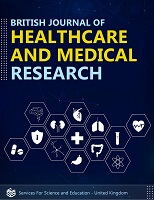Antioxidant Activity of Annona Squamosa (L.) and Annona Muricata (L.) Fruit Pulp Extracts against Leishmania major Induced Oxidative Stress in BALB/c Mice Model
DOI:
https://doi.org/10.14738/bjhmr.106.14541Keywords:
Antioxidants, Induced Oxidative stress, Leishmaniasis, Reactive Oxygen SpeciesAbstract
Animals remain the best models for the characterization of any disease and its impact on the host. The BALB/c mice model provides a unique opportunity to study Cutaneous Leishmaniasis (CL) in human in its active form due to its susceptibility to L. major infection, developing clinical and pathological features of CL similar to those found in human. During leishmaniasis progression, there is damage of internal organs such as the liver and spleen due to high parasite burden or metabolic processes produced by the host. Reactive oxygen species (ROS) and reactive nitrogen species (RNS) are generated upon macrophages exposure to Leishmania leading to the regulation of the inflammatory response controlled by the cellular antioxidant defense system. The ripe fresh fruits of A. muricata and A. squamosa were collected. The pulp, peel and seeds from the fruits were dried and grinded into fine powder. Aqueous and organic extraction of phytochemicals was undertaken and the extracts used to treat the BALB/c mice. The A. muricata and A. squamosa fruits aqueous and methanol extracts showed marked antioxidative activities against CL accompanied with DNA protective effects against H2O2-induced toxicity both in vitro and in vivo Methanol and aqueous extracts of the fruits were evaluated for in vivo antioxidant activities using both non-enzymatic and enzymatic antioxidants and organ protection ability using serum. The findings of this study showed that these extracts possess antioxidant potential in BALB/c mice. Extracts strengthened both enzymatic and non-enzymatic antioxidants to prevent the extent of lipid peroxidation and normalized level of both cardiac and hepatic markers in serum.
Downloads
Published
How to Cite
Issue
Section
License
Copyright (c) 2023 Lenny Mwagandi Chimbevo, Godwil Otsyula Munyekenye, Chris Ngeny, Amana Mzee Juma, Gibson Kamau Gicharu

This work is licensed under a Creative Commons Attribution 4.0 International License.






